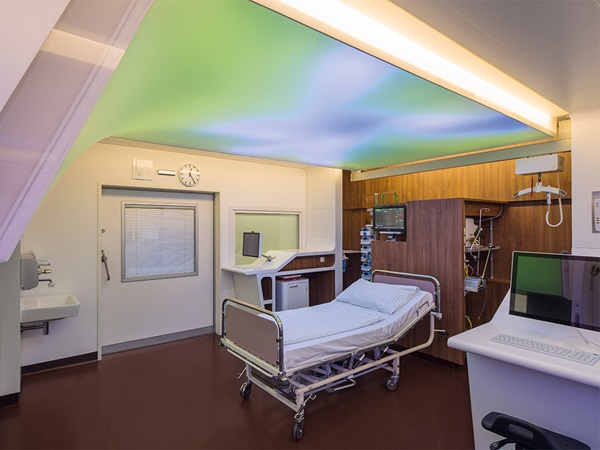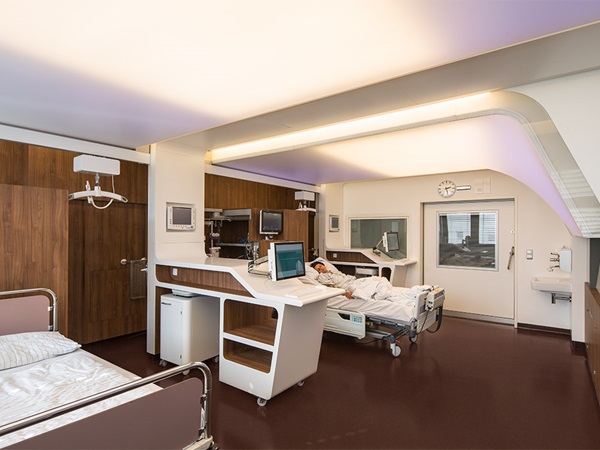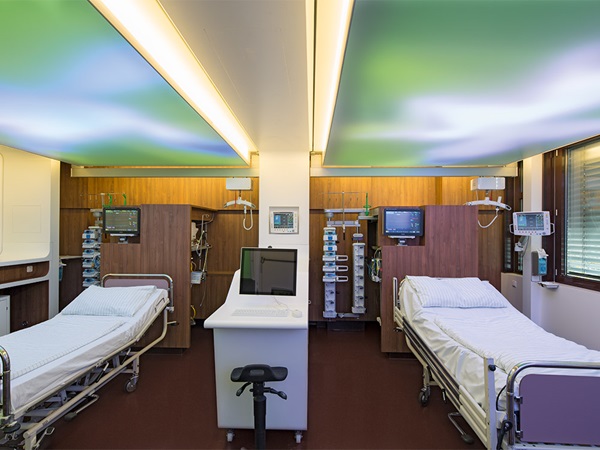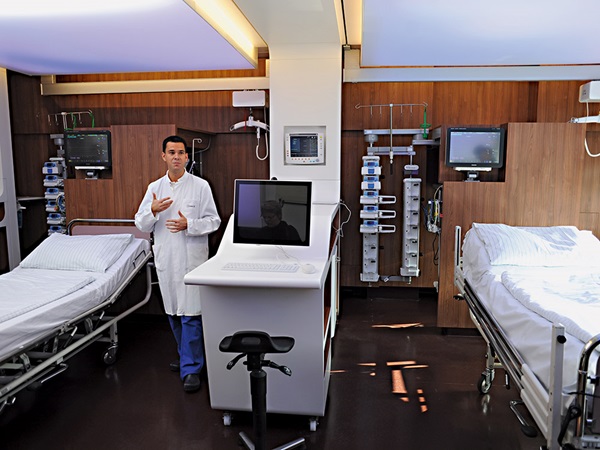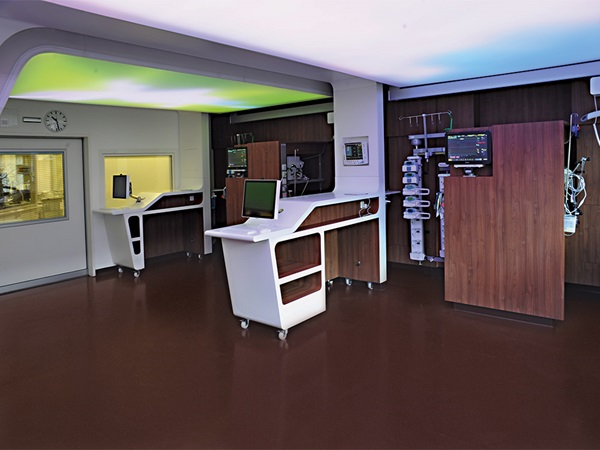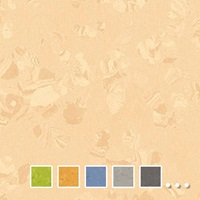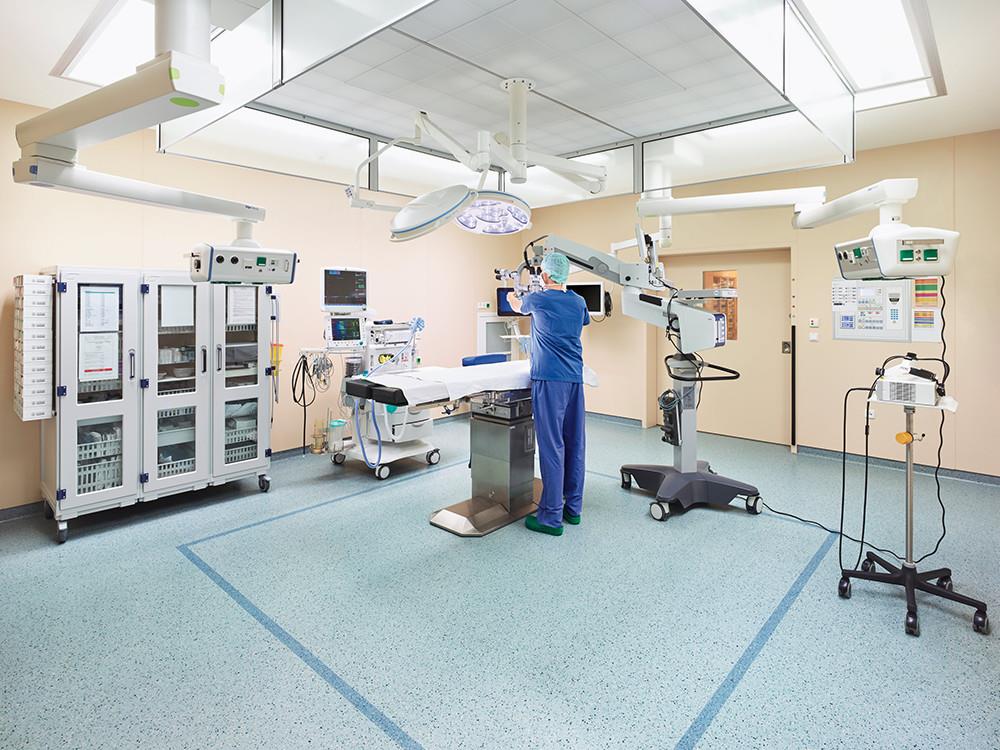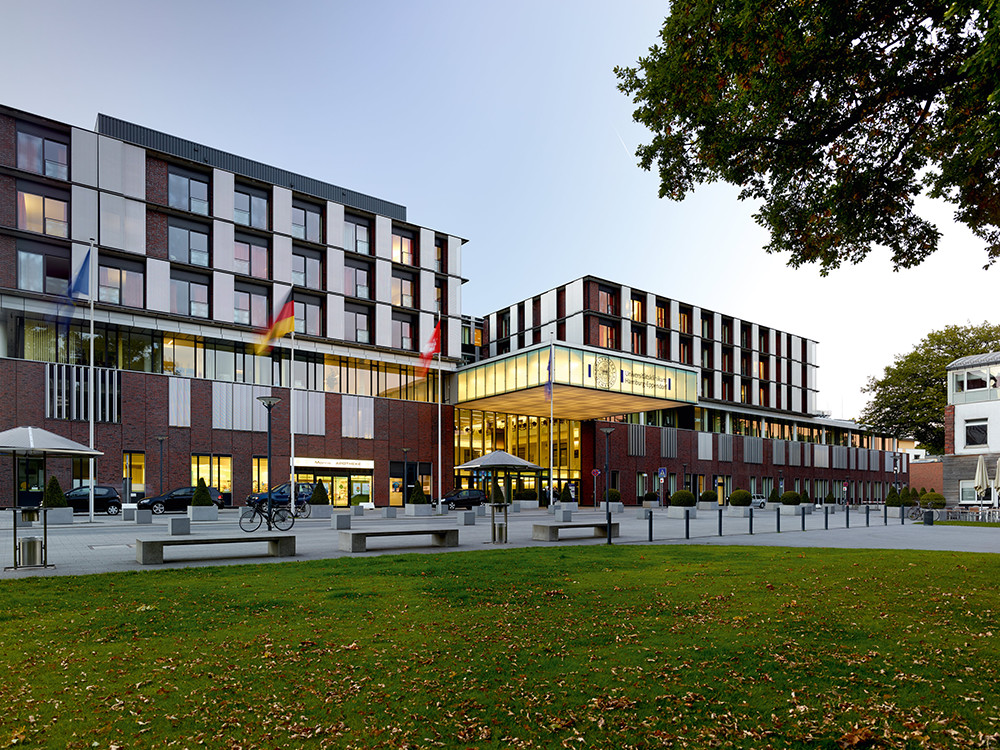To learn more about how the emotional and psychological burden on intensive care patients can be reduced through a corresponding room concept, Berlin Charité and Graft Architekten in Berlin have launched the research project “Parametric (T) Interior Design.” As part of this project, which is funded by the German Federal Ministry of Economics, two new pilot intensive care rooms with two beds each were completed at Charité’s Virchow-Clinic campus at the end of 2013 after three years of research and development work. In addition to Graft Architekten, the Charité’s Clinic for Anesthesiology and Operative Intensive Care Medicine, and Charité CFM Facility Management GmbH, the media designers at the Berlin design agency ART + COM were also involved in the design. The architects took an entirely new approach to the design of the pilot rooms: instead of technology, the focus was on the needs of the patients and their experience. Among other things, flooring played a decisive role here.
Flooring supports a comfortable atmosphere
In the new patient rooms, soft, fluid forms, extensive wooden surfaces, and dark floors create an atmosphere never before seen in intensive care units. When it came to selecting the flooring for the intensive care rooms, the architects decided to use electrostatically dissipative rubber noraplan® sentica ed flooring from nora systems. “There were several decisive factors in our choice,” says Annette Finke of Graft Architects. On the one hand, the rubber floor with its dark, warm brown tone helps to create a pleasant ambience and fits perfectly with the wooden furniture. “We were impressed by the homogeneous, uniform, calm feel and the extensive color spectrum of noraplan sentica ed,” explains the project manager. On the other hand, the flooring absorbs reflections from the ceiling. “The floor must never be reflective or dazzling.”
Relaxing room atmosphere thanks to innovative lighting concept
To ensure a soothing atmosphere in the rooms, medical devices and supply lines should also, as far as possible, stay out of sight. Indirect lighting and an individually controllable lighting concept also give comfort. Central to the light design is the simulation of a day-night rhythm that promotes natural sleep and can help prevent acute cognitive deficits. Above the beds hang large-format screens, which curve downwards and almost entirely occupy the field of vision. The color of the screens varies depending on the time of day. The current weather can also be entered by doctors or nursing staff via a tablet control unit so that the patients can, for example, see clouds passing by.
Environmentally friendly, hygenicand economical
The floors harmonize with more than the light. “noraplan sentica ed also meets the guidelines of the Berlin Senate for public buildings,” Finke explains. Floor coverings used in this context must be environmentally friendly and sustainable and must also have the best fire protection properties. All nora® floor coverings are free of harmful plasticizers and organic chlorine compounds, so ensuring healthy indoors air quality. Another reason for using the rubber floorings was their excellent hygienic properties. Unlike other elastic floor coverings, nora® flooring is uncoated and can therefore be completely disinfected. Due to the absence of coating, the electrostatic discharge capacity of the flooring is also permanently retained. Moreover, due to their sealed, extremely leakproof surface, the rubber coverings are resistant to surface disinfectants and make easy, hygienic, and economical cleaning possible – even in intensive care areas.
Rubber floors provide relief to the back and joints
Last but not least, durable nora® floors are distinguished by their special comfort: they make walking and standing easier and provide relief to the back and joints – a major benefit for doctors and nursing staff, who often spend hours on their feet. In addition, they absorb the sound of footfalls, which contributes to maintaining a quiet atmosphere and good room acoustics in the patient rooms. “The ergonomics of the rubber flooring was an important criteria for us,” confirms project leader Finke.

 Denmark | English
Denmark | English
